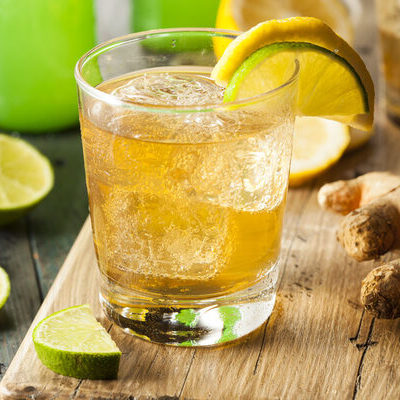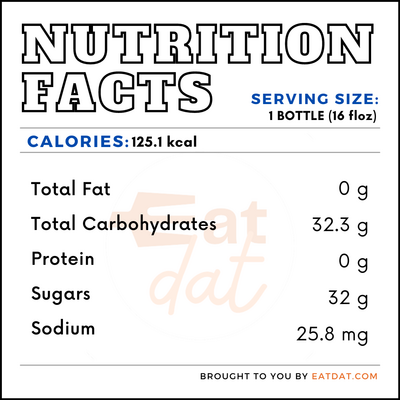
Ginger Ale
What is Ginger Ale?
Ginger ale is a sweet carbonated beverage flavored with ginger. This drink is often mistaken for ginger beer. However, the difference between the two is that ginger beer is an alcoholic beverage produced by brewing ginger, water, and sugar, while this drink is a non-alcoholic carbonated beverage that is spiced with ginger. It is a popular drink, historically consumed during air flights, with two major types of this drink being:
- golden
- pale dry
From 2019 to 2023, the worldwide market value of this soft drink is expected to reach $5.34 billion, growing at a rate of 6.57%.
The top brands, according to Esquire, are:
- Canada Dry
- Fever-Tree
- Schweppes
- Blue Sky
- Seagrams
- Polar
- Reed’s
- Bruce Cost Unfiltered
- Cape Cod Ginger
- Brooklyn Crafted
Origin of ginger ale
The exact origin of this beverage is not known. However, this drink is believed to have its roots in Northern Ireland in the 1850s. Thomas Joseph Cantrell, an Irish surgeon, is credited as the creator of this drink. He invented it in his hometown of Belfast and marketed it with a local manufacturer.
The popularity of this drink grew from this period onward. In the early 1900s, a Canadian chemist developed the pale-dry type of this drink. He had been experimenting with different flavors before achieving a drier version of the popular beverage. This discovery led to the birth of several new brands of ginger ale.
Function
This drink can be used to reduce the sodium content in a Christmas ham, as well as to tenderize crock pot meat. It can even be used in place of cold water when preparing a gelatin dessert. Also, this beverage is commonly used to give cocktails and mocktails a sweet fizz.
Nutrition
One bottle (368g) offers the following nutrients:

This drink has several health benefits like treating nausea or upset stomach, easing osteoarthritis pain, and lowering blood sugar, as well as blood pressure.
However, some possible side effects of this drink include:
- When consumed in excess, this beverage could cause gastrointestinal ailments.
- The high levels of sugar in this drink may lead to obesity and type 2 diabetes.
- This beverage can slow down blood clotting.
- It may cause mouth irritation, heartburn, and diarrhea.
Commercial production
Soft drinks have the same industrial production steps. The three primary ingredients required for the commercial production of these drinks are carbonated water, sugar, and flavor (Ginger).
The stages of manufacturing soft drinks are listed below:
- Clarification of the water
- Filtration, sterilization, and dechlorination of the water
- The mixture of the ingredients
- Carbonation of the beverage
- Filling and packaging
Application
This drink can be purchased from a store or homemade. Homemade beverages should be stored in a refrigerator once it’s fully carbonated. Leaving it out at room temperature can cause more carbon dioxide to be produced. This could lead to an explosion when the bottle is opened. This beverage should be consumed within two weeks.
Ginger ale recipes
This goes well with almost all drinks. Here are some popular recipes:
- Diablo
- Ginger Mint Lemonade
- Singapore Sling
- Kahlúa Ginger Ale
- Slushies
- Ginger Ale Highball
- Kiwifruit Ginger Ale Cocktail
FDA Regulation
The FDA has no specific regulations for this drink. However, it does regulate the labeling and production of carbonated soft drinks. They regulate the label statement of soft drinks when relating to the usefulness in reducing or maintaining weight, but offer no statement of identity.
The FDA doesn’t regulate the growing, harvesting, and packaging of ginger as it is classified as a rarely raw consumed agricultural product. Although, they define ginger as a spice, giving a standard for labeling. The FDA also gives a reference amount consumed per eating occasion for ginger paste.
References
Gallary, Christine. “What’s the Difference Between Ginger Ale and Ginger Beer?” The Kitchn, The Kitchn, 1 May 2019, www.thekitchn.com/whats-the-difference-between-ginger-ale-and-ginger-beer-222925.
“Ginger Ale and Tonic Mixer Market: Worldwide Insights, Trends and Forecasts (2019-2023)” Business Wire, Business Wire, 31 Jan. 2020, www.businesswire.com/news/home/20200131005245/en/Ginger-Ale-Tonic-Mixer-Market-Worldwide-Insights.
Bhargava, Hansa D. Ginger: Health Benefits & Side-Effects. 26 Aug. 2020, www.webmd.com/vitamins-and-supplements/ginger-uses-and-risks.
The Editors of Encyclopaedia Britannica. “Ginger Ale.” Encyclopædia Britannica, Encyclopædia Britannica, Inc., 14 Aug. 2019, www.britannica.com/topic/ginger-ale.
“CFR – Code of Federal Regulations, Title 21.” Accessdata.fda.gov, U.S Food & Drug Administration, 1 Apr. 2019 https://www.accessdata.fda.gov/scripts/cdrh/cfdocs/cfcfr/CFRSearch.cfm?fr=101.22&SearchTerm=ginger
